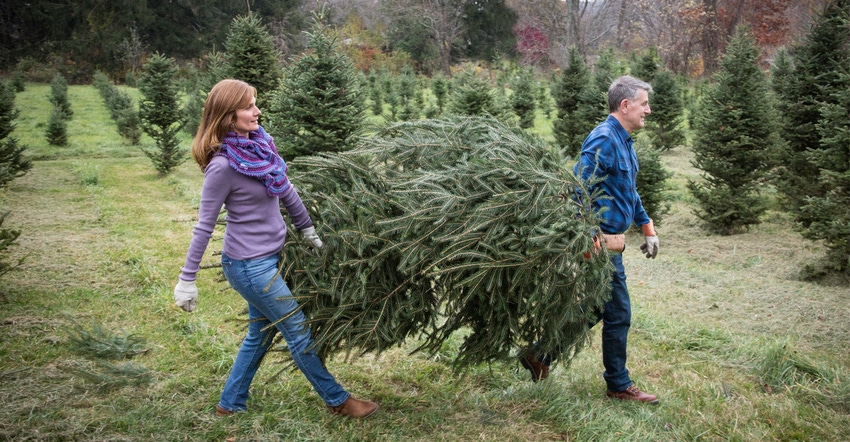
Each year around the holiday season, 25 million to 30 million real Christmas trees are purchased from the 15,000 U.S. tree farms scattered across the country.
The National Christmas Tree Association, which is the national trade association representing the real Christmas tree industry, has about 700 active member farms and includes 29 state and regional associations — and 4,000 affiliated businesses that grow and sell Christmas trees or provide services and supplies.
NCTA has a wealth of information to help real tree buyers select and care for their perfect Christmas tree. Here are a few tips gleaned from NCTA:
Make the cut. Once you’ve selected your perfect tree and brought it home, it’s important to properly prepare the tree to go inside. Once it is brought home, the tree should go into water as soon as possible. If you choose your tree from a choose-and-cut farm, and the fresh tree went into water within a short period — less than a couple of hours — you are probably ready to go into the stand.
But over time, trees that are left out of water for several hours will naturally produce a resin that seals the trunk, and this will not allow the fresh tree to take up water in the way that it should. That’s why it is important to always make a fresh cut on these trees of about one-half inch to an inch from the trunk base of the tree. Make the cut perpendicular, not in a V or at an angle, so the tree stands straight in your tree stand.
Provide plenty of water. A stand with adequate water-holding capacity is the best way to display your real tree. As a rule of thumb, NCTA suggests using a stand that provides 1 quart of water per inch of stem diameter of your tree. If the tree has a trunk that is 2 inches in diameter, the stand should hold at least 2 quarts of water.
Keep watering. That first week the tree is inside, it may take up more water than you can imagine. This is completely normal. It is not necessary to use warm water or to drill a hole in the base of the trunk. Neither of these activities will increase water uptake. The original extra cut made to the base does the trick. Make sure the water basin remains full at all times to maintain the freshness of your real tree.
Use common sense. Simple common sense in the care of the tree inside will keep it fresh. Beyond maintaining optimal water levels in your stand, keep the tree away from major sources of heat such as a fireplace, heater, heat vent or direct sunlight, as these will dry out the needles. Use lights that are safe and produce low heat, like miniature lights, because this also reduces drying. Do not overload electrical circuits, and always turn off lights before leaving the house or going to bed.
Deal with dry needles. Before you set up your tree, you may have noticed dry tan or brown needles on the inside of the tree, closer to the trunk. This does not mean that your tree is dried out. Most evergreens will drop up to 30% of their dry needles from the branches inside the tree every year. Because real trees are typically “sheared” in the summer to produce that pyramidal, desirable shape, this increases the density of needles and branch growth, so the winds do not blow through the tree as they would in a wild evergreen.
Therefore, the needles often do not drop off. Most tree growers will clean the needles manually or place the tree in a shaker to automatically get rid of most of those dry needles before you take the tree home. If there are a few remaining, simply pull them out manually with your hands, but wear gloves during this process to avoid dealing with sticky resin on your fingers and hands.
Recycle. It might be tempting, but never burn any part of your evergreen Christmas tree in a wood-burning stove or fireplace. The resin in these branches and wood can be prone to produce heavy sparks, depending on the species of tree. You can always take your tree to a recycling center, have a nonprofit organization pick it up, or contribute the tree to a community recycling and mulching program, depending on your location.
These trees can be used as bird feeders in your yard, especially if you hang fresh orange slices or popcorn on the branches that will attract birds. Just make sure there are no decorations or tinsel left on the branches.
Real Christmas trees can be mulched, chipped or simply broken apart manually for use as landscape biomass and mulch around the home or farm. Such chips work well as erosion control or for pathways and hiking trails, as well as landscape mulch. Some real trees are sunk in private fishponds, making excellent refuge and feeding areas for fish.
Get more information on caring for your real Christmas tree at realchristmastrees.org.
About the Author(s)
You May Also Like






